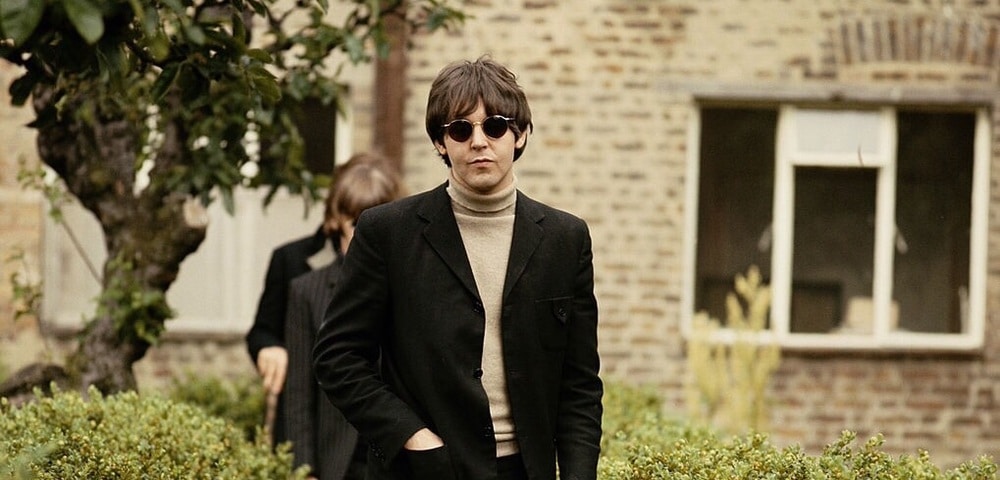Over the last few months of 2016, we began taking a look at the songs on Revolver…and reminding ourselves why it was such a pivotal LP for the lads. Together (combining our Fest blog and your comments) we scratched beneath the surface of the music and lyrics to uncover new insights. Just as the year ended, we neatly completed our examination of Side One.
Now…
…perfect for the beginning of a brand-new year with myriad possibilities is “Good Day Sunshine.” Wisely selected to kick off Side Two of Revolver, this buoyant ditty expresses all the optimism contained in every “chance to begin again.” Martin employed its bright melody and uplifting lyrics to woo Beatles fans into the second half of the LP. After the anger rife in “Taxman,” the loneliness pervading “Eleanor Rigby,” and the deeply somber nature of “She Said She Said,” Paul McCartney’s “Good Day Sunshine” offered listeners something heartening, something upbeat, something to laugh (or smile) about.
Furthermore, for those fans who (by the close of Side One) were despairing that The Beatles they knew and loved had vanished – morphing into Revolver’s highly-engineered group of complex musicians – this song provided a return to The Beatles of yore. This is the way young John and Paul used to sound when they performed in Liverpool College of Art’s Room 21 at lunchtime. This is the sound of The Beatles, live at the BBC. This is the unplugged sound of The Beatles of old. And fans were glad of it.
Although both John and Paul admitted that Paul wrote 95 percent of “Good Day Sunshine,” the number is, without a doubt, highly influenced by John. But not John Lennon this time: the inspiration came from John Sebastian.
Over in America, Sebastian, the Greenwich Village-based lead singer and songwriter for The Lovin’ Spoonful, was hitting America for six! In 1965, he’d scored with “You Didn’t Have to Be So Nice” and swiftly followed up with “Do You Believe in Magic?” Then in ’66, he had another big, big, BIG hit: “Daydream.” So, the very observant James Paul McCartney handily employed Sebastian’s easy-does-it, lazy-days techniques in his new composition, “Good Day Sunshine.”
In keeping with the Spoonful genre, the Revolver song’s lyrics were lighthearted and happy-go-lucky:
“She feels good! She knows she’s lookin’ fine!
I’m so proud to know that she is mine!”
That’s about as simple and content as a lyric line can get. Spoonful-esque! But remembering Russell Reising’s caveat that on Revolver, “there are no silly love songs,” savvy listeners long suspected that somewhere in this McCartney number, there was a deeper, hidden meaning. In the volume, All the Songs, the collaborative authors suggested that when Paul sang, “I feel good in a special way,” he might have been slyly alluding to his Revolver era fascination with marijuana. If this is true, then “Good Day Sunshine” was the predecessor to “Got to Get You Into My Life,” and both songs boasted a second level of meaning. (“More here than meets the eye!”)
But honestly, for original, old-time Beatles fans, added incentives to enjoy “Good Day Sunshine” were not necessary. All of the traditional “fab” ingredients were already present in the mix. The Beatles’ winning love song formula was there. George Martin’s honky-tonk piano lead was expert. The Lennon/McCartney backing vocals were spot on. And, as Robert Rodriguez pointed out in his insightful book, Revolver: How The Beatles Re-Imagined Rock’n’Roll, Ringo’s “cymbal splashes and added percussion touch-ups, such as handclaps” were welcome custom. Finally, the entire offering was infused with McCartney magic.
Sometimes less truly is more. And this unadorned, joyful ditty proves that rule. Fans who were bewildered and confused by “She Said She Said” were – after singing or toe-tapping along with “Good Day Sunshine” – pulled back into the fold. They leaned in once again, hovering over the turntable and listening…just as George Martin had predicted they would. They reconnected.
Then…the second selection on Side Two began and Revolver, once more, took a dark and unexpected turn! What was it? And to whom was that next song written?
See you next time for “And Your Bird Can Sing.”
1. For those unfamiliar with this British phrase, “hitting someone for six” means making an impact. It originate in cricket when a player hits six off the bowling.
2. Turner, Steve, A Hard Day’s Write, 112-113.
3. Reising, Russell, “Vacio Luminoso,” 127.
4. Rodriguez, Revolver: How The Beatles Re-Imagined Rock’n’Roll, 144.
Jude Southerland Kessler is the author of the John Lennon Series: www.johnlennonseries.com
Jude is represented by 910 Public Relations — @910PubRel on Twitter and 910 Public Relations on Facebook.










